The Vitals
Date: April 18 – April 29, 2025
Location: Yunnan, China
Distance: ~340 km biked, 20 km dayhike
Partners: Brittany
Resources: Cycle Fiesta. We cribbed most of our itinerary from this trip report.
The Trip
In 2018 we spent a month riding over 1000 km in China’s southwestern Yunnan province. In that instance, we rode from the capital, Kunming, to Laos through hot, humid mountains with thick, lush vegetation on rural roads. There were people everywhere but we were well off any tourist track: domestic or international. In 2025, we were looking to repeat that experience with a three-week tour in the same province but exploring further west and north.
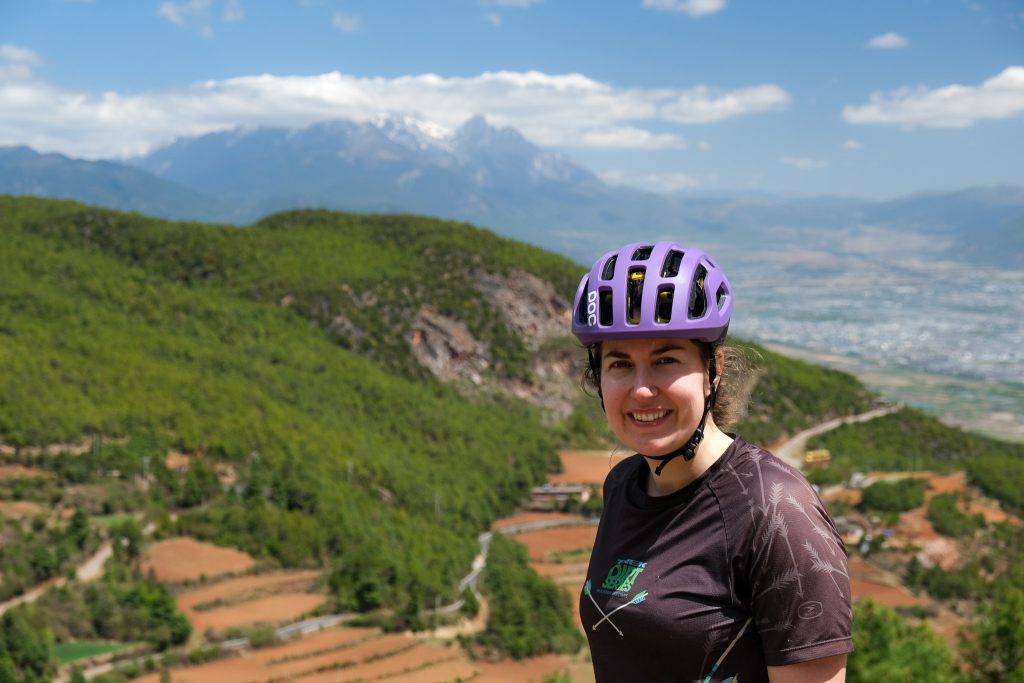
We concocted many itineraries but most were too ambitious until we found a recent trip report from a man who runs a small cycle-touring business in Europe. He had a very well-marked map and write-up that matched our desired pace so we downloaded the track and it became our plan to follow it.
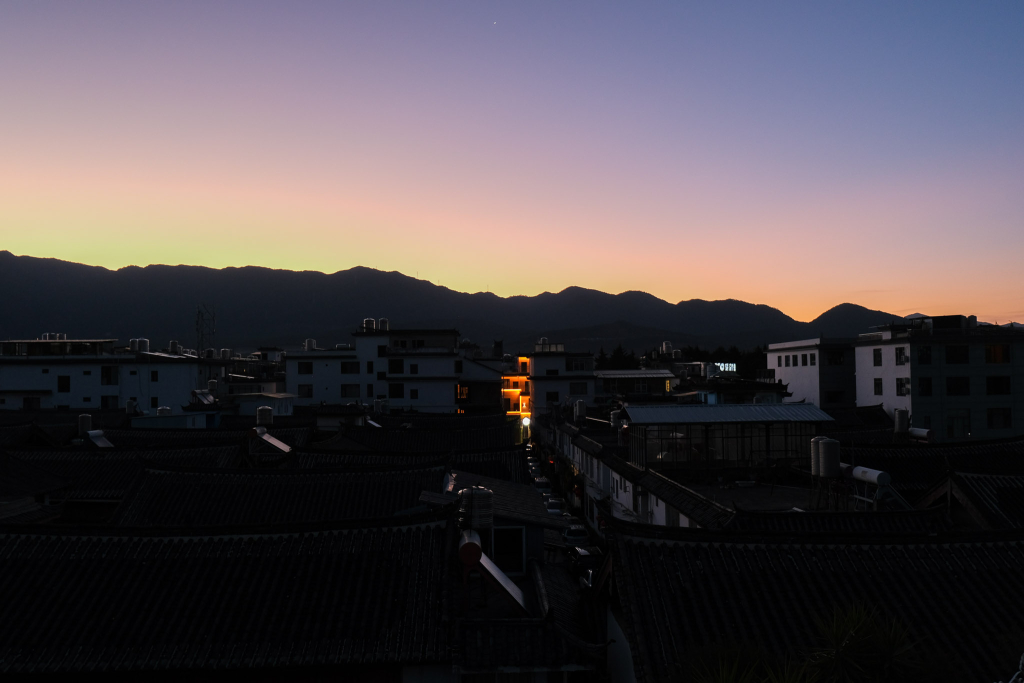
The first destination was a two-flight itinerary from Vancouver to Lijiang airport, one valley south of Lijiang city. We were well-prepared for travel in China with WeChat and Alipay set up ahead of time and e-sims from a company in Hong Kong. Last time we paid for everything in cash but this is becoming harder to do as time goes on. We were also savvy enough to take advantage of the free transit hotel in Bejing so we had a pleasant evening stroll through a city park before we returned to the airport at 4:00 am for the second leg of our journey.
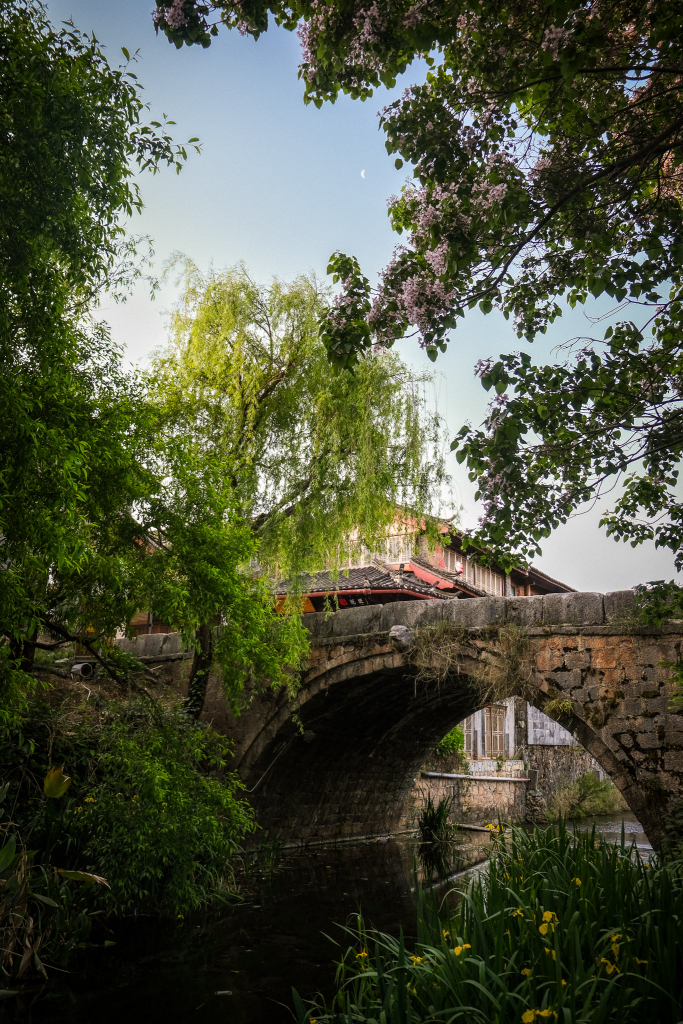
Transport to the hotel, building up our bikes, and finding some food was all fairly easy but the area around the airport is not particularly nice and there is a lot of ongoing construction. We were eager to leave in the morning but a jet lag-induced wake up at 3:00 am was a little too early. Around 7:30 we actually packed up and set off for our first day of riding towards the “ancient town” of Shuhe.
Once we got north of the airport we were able to get on some quiet rural roads before returning to the main road that climbs to the top of the small pass that separates Lijiang city from the airport that services it. From here, we continued to voluntarily climb higher into the hills on a very quiet road through pine forest. This is signed as a hiking area but there was a lot of garbage and didn’t seem that nice to hike in. It was also the first of several times that we had to register with some sort of fire warden manning a gate at the entrance to the forest.
In general, the valley bottoms in this area of Yunnan are around 2000 meters above sea level and the passes are 3000 meters or so. The tallest mountain in the vicinity is the Jade Dragon Snow Mountain at over 5596 meters. Coming from sea level and jet lagged, this first day of riding was pretty tiring but once we eventually crested the top, we were treated to views of the aforementioned massif and a long descent on nice pavement to the city below.
Our evening and following day were spent exploring Shuhe and Lijiang ancient towns with the latter being much larger and, in my opinion, a better place to stay. There are many ancient towns all along our three-week route but most of them are very contrived with the same few shops repeating endlessly (rose cakes, costume dressup/photo shop, crystals, coffee, dried mushrooms). Neither of these ancient towns were quite our style, but Lijiang is larger with a real market and wider streets to stroll. In Lijiang, the extra fee to enter Lion Hill and climb the tower atop it was a highlight.
After the day off, we continued to ride north towards the mountain and the national park that surrounds it. The valley quickly became drier and we saw horses and a camel (for tourist purposes) as we joined a busy highway that led to the park gates. Once in the park, we began to climb for a few hundred meters as the clouds gathered and the winds picked up. We reached a high plateau and joined thousands of tourists, most there on day trips by bus from the city, who were there primarily to ride the gondolas high on the mountain or take wedding photos. See the video below of just one massive parking area where the buses wait after dropping off their passengers.
After the first main tourist village with the highest gondola, the crowds died down a bit and they almost disappeared completely once we passed the “blue pools” a few kilometers further on and the second gondola. We didn’t dally long in these areas as it was just too busy. Our accommodation for the night was in the national park at a hotel with disposable everything (sheets and towels included) and stocked ponds. We ate salmon sashimi at 2800 meters and may have been the only patrons of the establishment other than some workers playing mah jong in a back room.
The next day we continued riding with the destination being Hetaoyuan, one of the villages contained in the “Tiger Leaping Gorge”. This is an extremely deep gorge with the walls of the Jade Dragon Snow Mountain on the south side, the Haba Snow Mountain on the north side, and the Jinsha (upper Yangtze) river in the bottom.
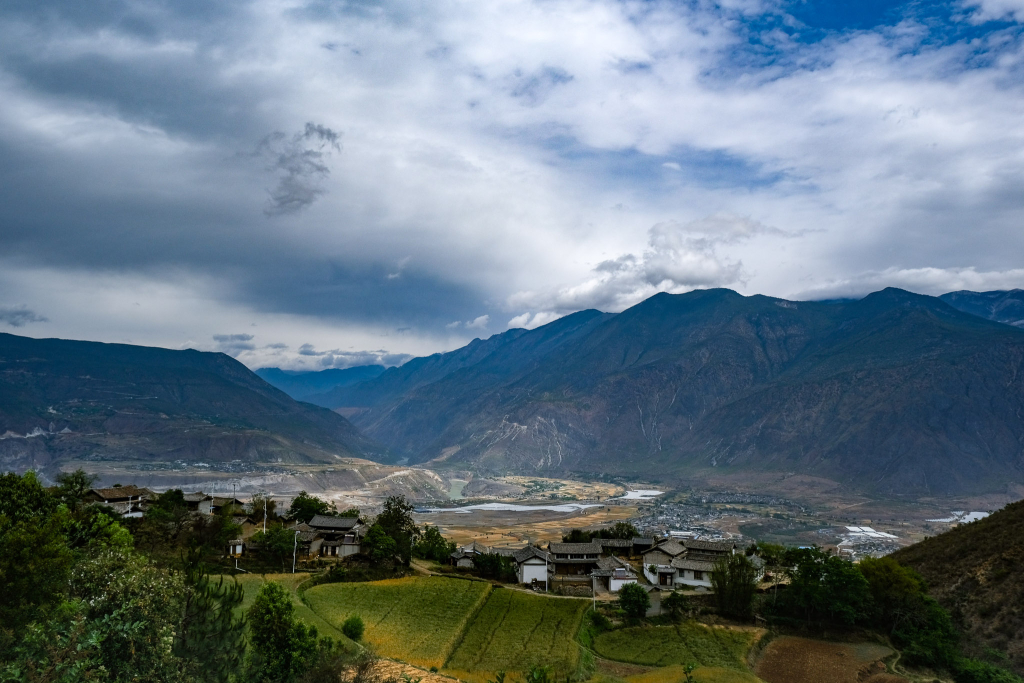
Before we reached the gorge, we first needed to climb a little higher in light rain through more pine forest before we reached a 36 km descent where we lost 1500 meters on our way to the town of Daju. This area became reminiscent of the Pamir highway in Tajikistan with loose, steep mountains raining debris onto the road and the overwhelming colour palette being grey and yellow. This area is very close to Tibet and the people and landscapes share a lot of commonalities.
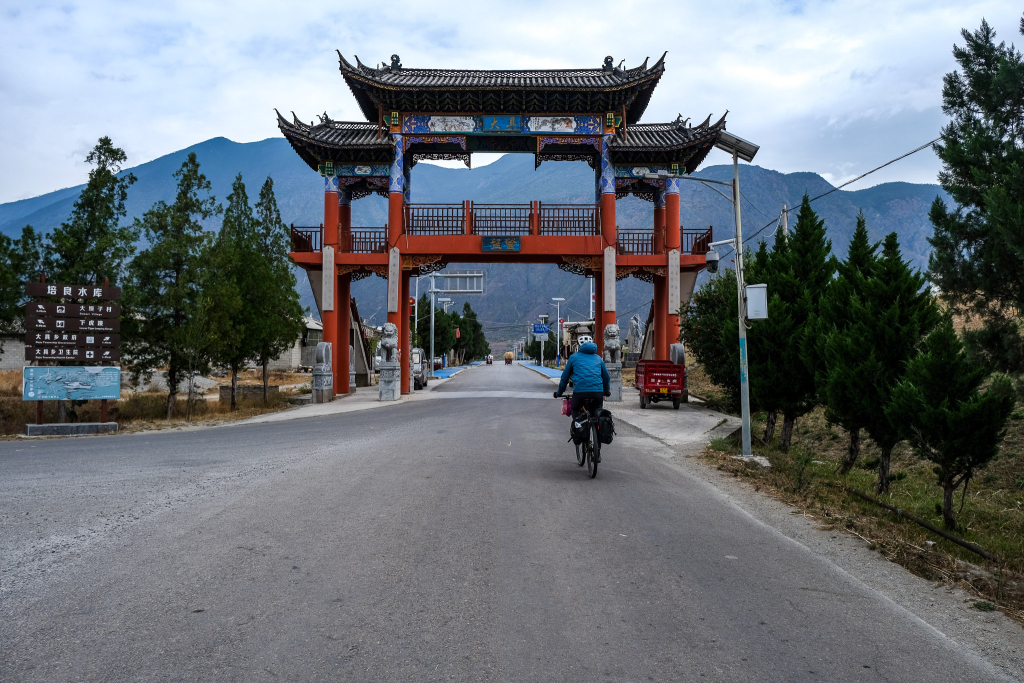
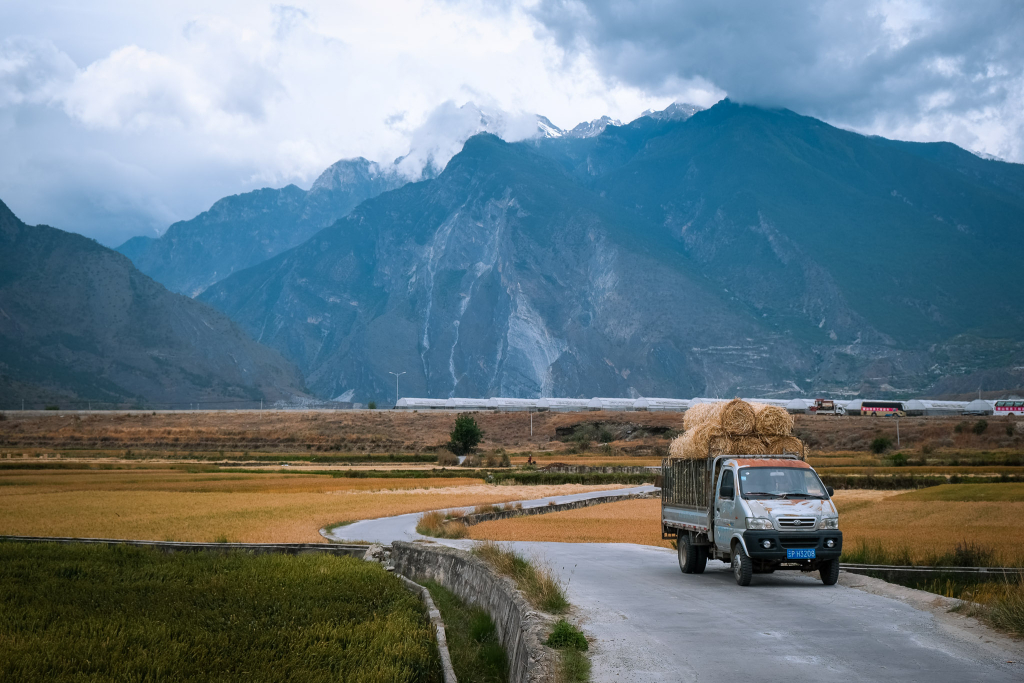
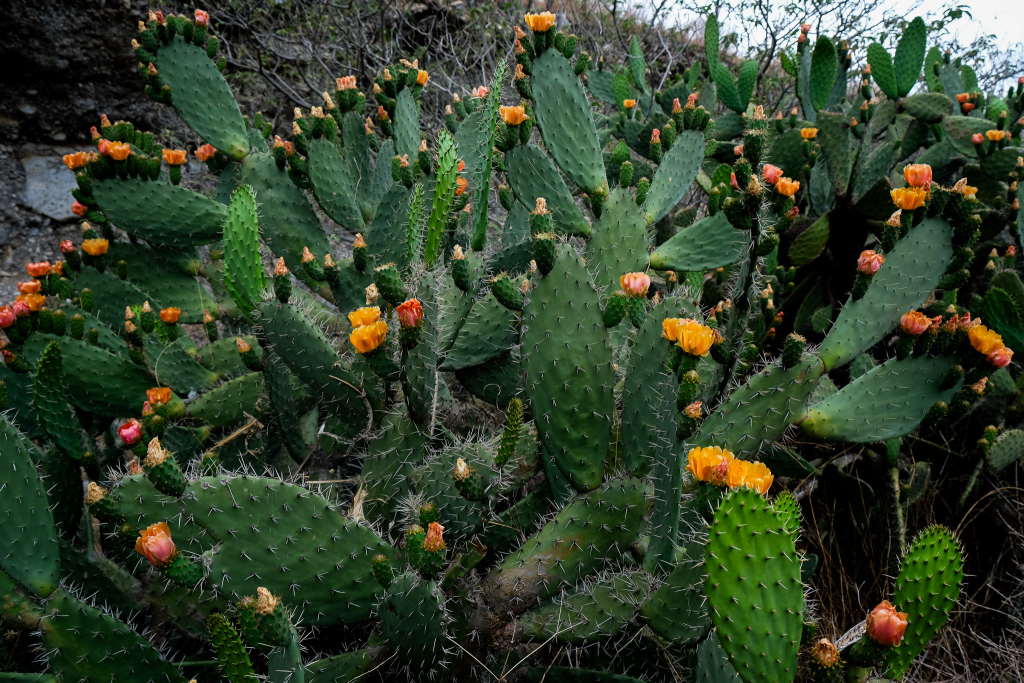
We entered the gorge at its east end which is the back entrance that relatively few people use. The wind was funneling in the gorge and we reached our accommodation (Tibetan Guesthouse) under the grey skies and low cloud for the second day. The towns are all perched on steep slopes and it’s easy to think about landslide risk as you peer down to the river far below.
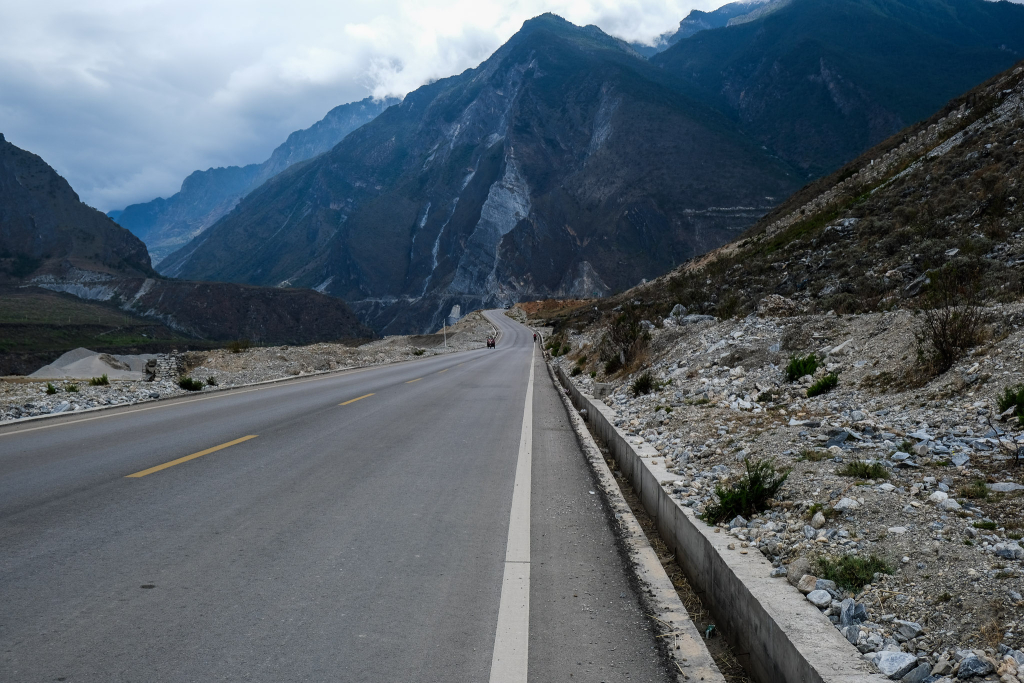
We took another day off in the gorge to hike the high route from the west end back to our guesthouse. We arranged a driver to take me to the start of the route and Brittany was dropped off halfway to have a lighter morning before I caught up to her. I started my hike early relative to the main crowds and was treating it as exercise so I was fast walking or light jogging most of the time. I incidentally set the strava course record on the “28 corners” climb but I don’t think strava is that popular in China. I ended up having the trail almost entirely to myself though I did pass a few women carrying beverages to their remote perches where they sell them to tourists later in the day.
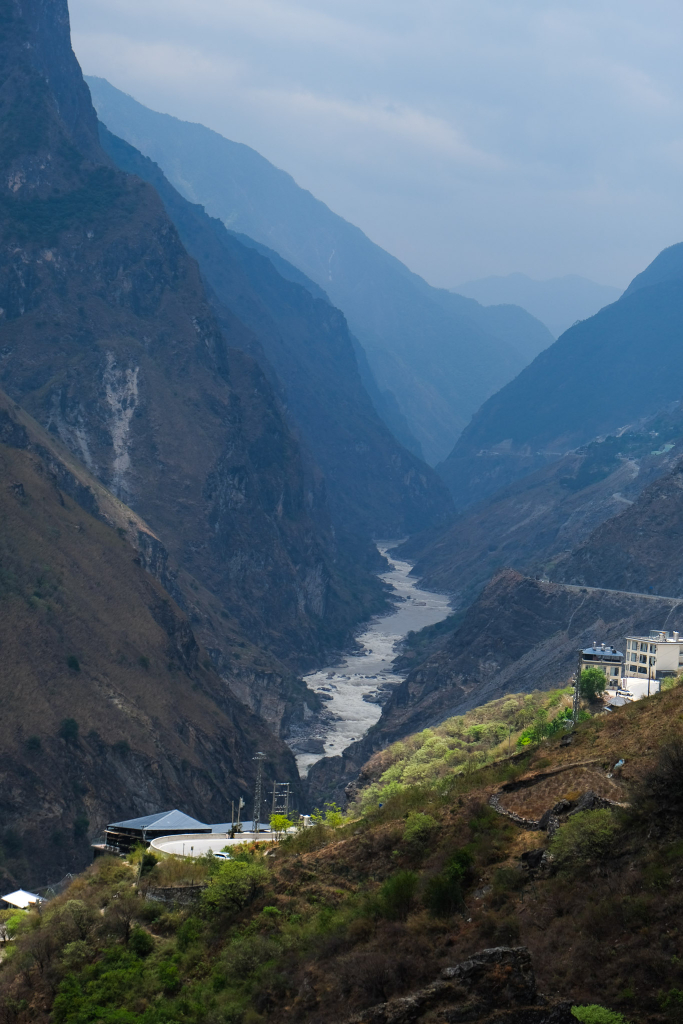
After picking up Brittany, we slowed down a bit and passed through busier sections with waterfalls before descending back to the road. There are apparently beautiful riverside sections of trail in the lower gorge but they had been closed by the government just three days before we arrived; deemed too dangerous.
In the later afternoon, we wandered below the main road into a tranquil area of small family plots of land with walnut groves, figs, wheat, and small homesteads. It was very peaceful and is clearly the more well-preserved way of life in the gorge, persisting a few hundred meters from a new, busy road and many hotels.
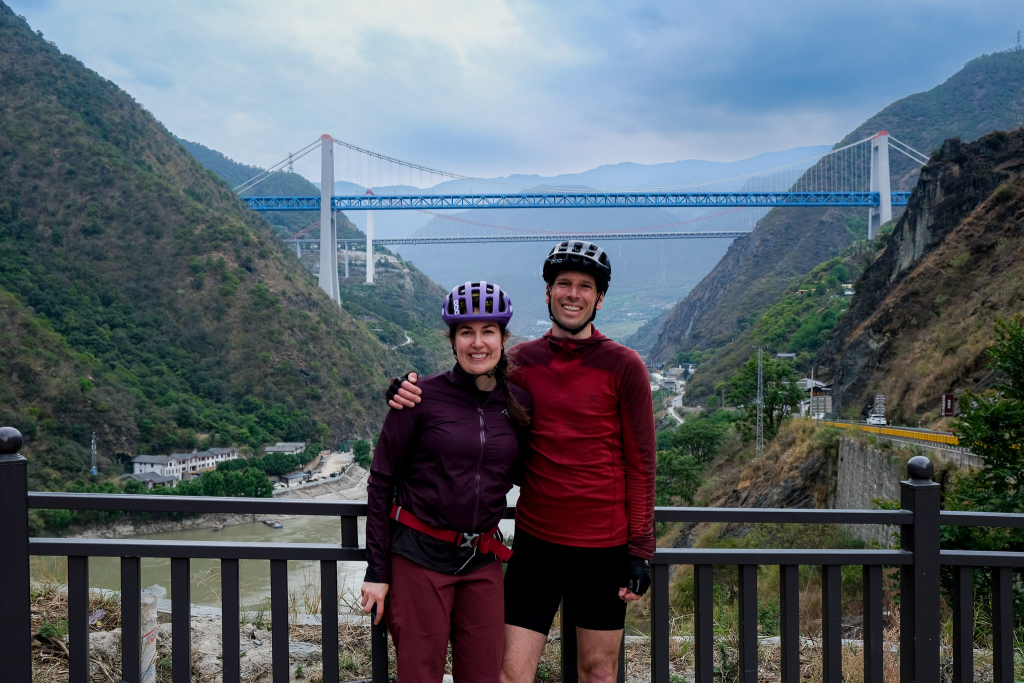
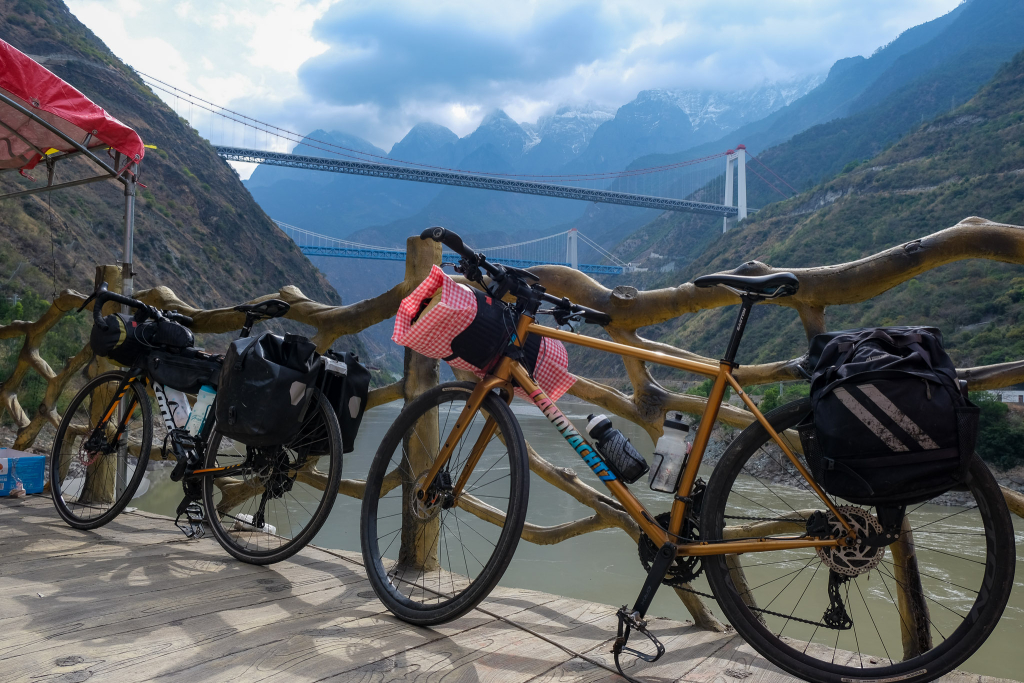
Our next riding day continued west in the gorge towards a 2 km long tunnel and the main entrance to the Tiger Leaping Gorge. It was again very windy but, counterintuitively, we were actually going downhill despite traveling up river. This is because our guesthouse was hundreds of meters above the river but we reached river level by the time we hit the west gate. After leaving the gorge, we had to contend with one of the most dangerous roads of the trip. There were a few kilometers of very busy road with essentially no shoulder and an open trench to fall into if you went off course. The trucks were plentiful and not inclined to give you enough space.
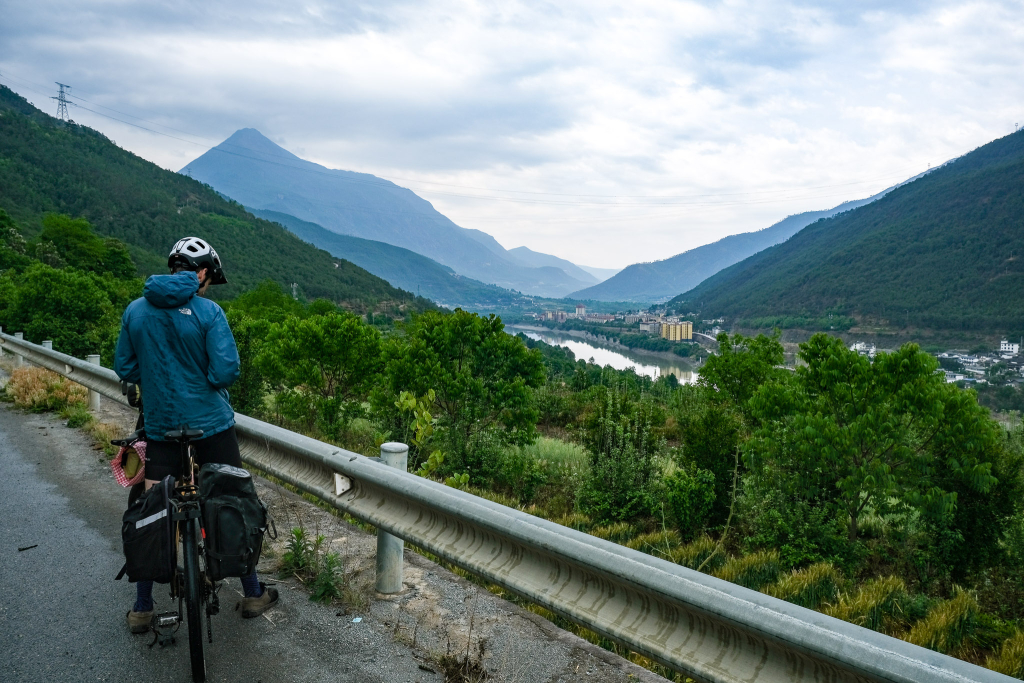
Fortunately, we survived the road long enough to take a small bridge across the Jinsha where we rode through amazing rural towns in misty weather. The landscape had completely changed back from the dry rocks and pines to dense, leafy greenery. After lunch, we crossed the river again but we were now south of the expressway connection and the road was practically empty. We rode through one city that seemed like it was started as a massive project but the money ran out years ago (quite a common sight, actually). That means big, empty apartment complexes and four lane roads with no cars. It’s really fun to ride and not something you are likely to find in a Western country.
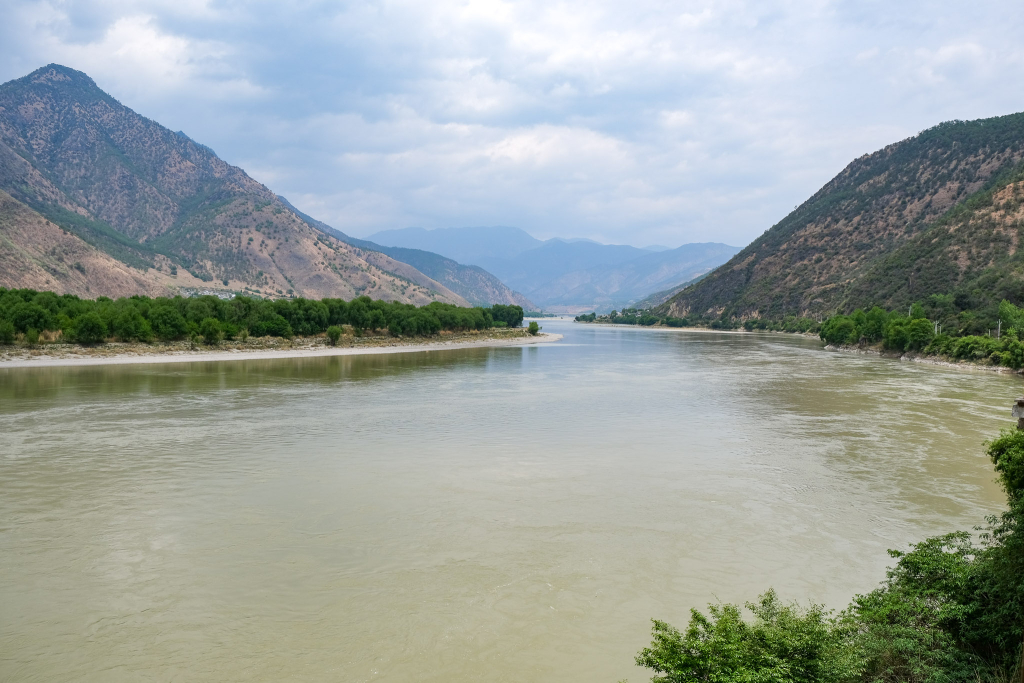
Our destination this day was the town of Shigu. It is famous for a giant stone drum, some history related to the Long March, and being the site of the “first bend” in the Yangtze where the river changes trajectory from southerly to northerly. Shigu is also a tourist day-destination for buses from Lijiang, but it was much quieter than Yulong National Park or Tiger Leaping Gorge. The old town was also much more genuine with people mostly living a life that is not dependent on tourism. There is an open air communist museum and a public stage that is hundreds of years old. Most of the towns we visited have some history related to the Tea Horse Road where trading caravans exchanged horses from Tibet for tea from the Chinese dynasties. These caravans stopped in towns like Shigu where there would be entertainment and lodging.
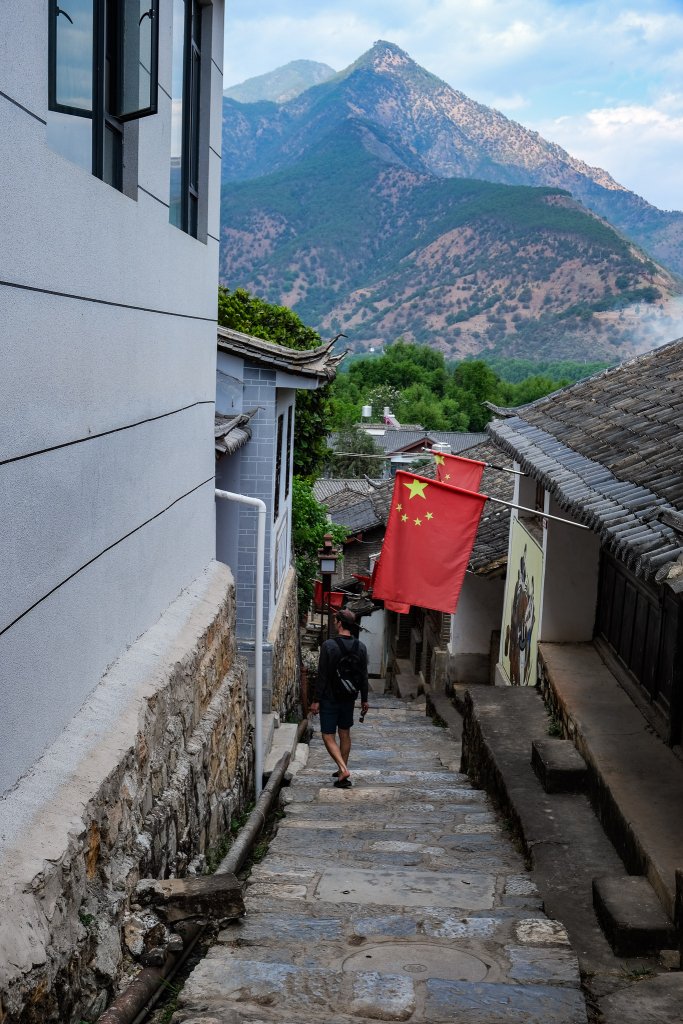
From Shigu we set off on another riding day where we would take a tiny rural road through the mountains on our way to Jinhua. This was one of the two best days for atmosphere as we climbed high into the hills (mostly by pushing our bikes) past predominantly elderly people working the land in a very manual and laborious way. The work is very hard but the people seem happy to call greetings as you pass. I understand that most of the young people move to cities for work in manufacturing and remit some money to their parents. Sometimes children are left with the grandparents in these tiny towns.
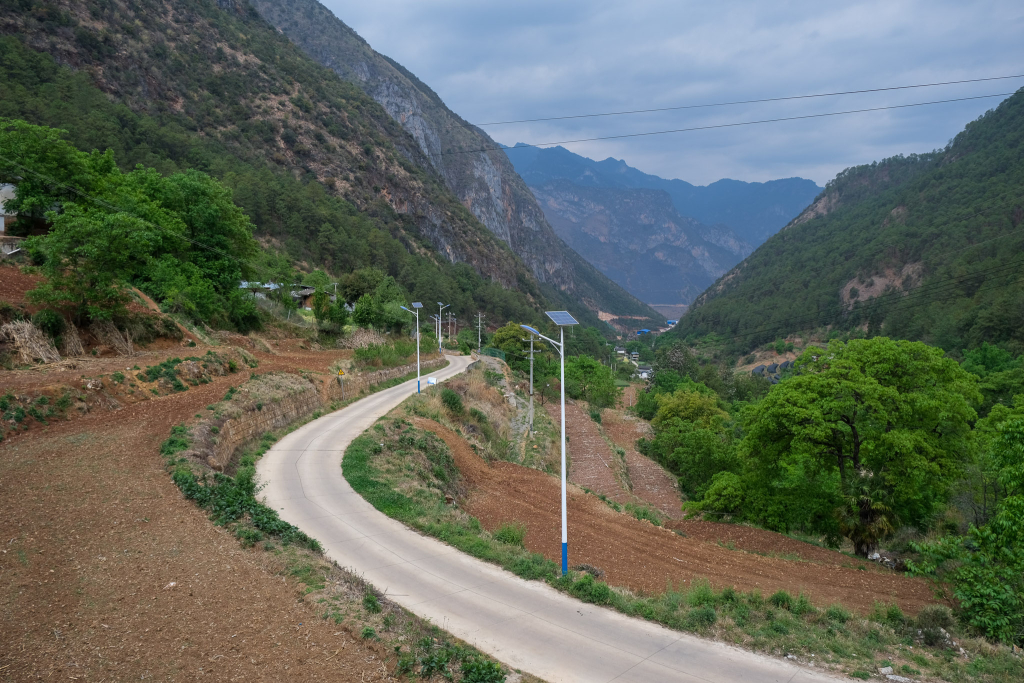
From the high point, we coasted down to another heavily populated valley where we spent an hour winding through narrow village streets where the local Bai ladies were dressed in bright blues and pinks. This was not part of the tourist gimmick of the more commercial ancient towns, this was just life. For the final hour we had to join a busy road but a tailwind brought us to the bustling old town of Jinhua during the market day. We found our way to our hotel on the packed streets and had some relief as we found the inner courtyard and koi pond counteracted the melee without.
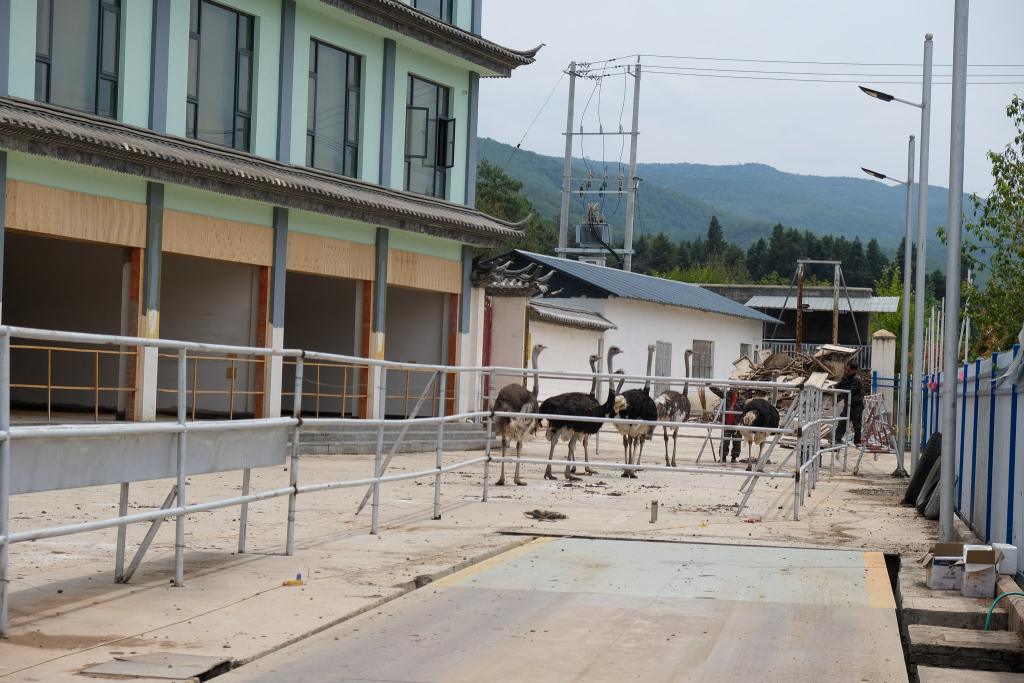
Later in the evening, we could enjoy the mostly empty streets looking at the statues of figures from history and the wood carvings that are the local specialty.
We took another day off in Jinhua where we took a taxi to a nearby lake that is famous for birding. We had a great day trying to identify the many birds and walking along the boardwalks and shoreline. In the evening, we went to the main intersection of the old town and people-watched from a small table outside the convenience store while I sipped a beer.
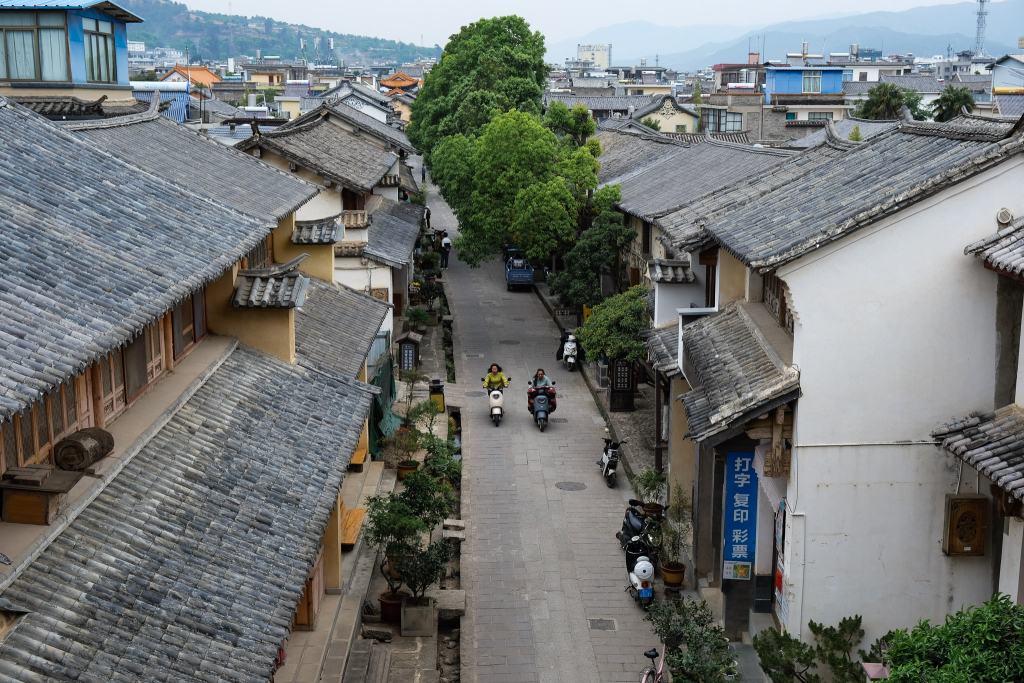
The last day of riding in the first half of the trip was the nicest of all. We again left the busy valleys to climb into the hills where you might meet a couple of vehicles in an hour and they are most likely to be a three-wheeled farming contraption. We passed forested areas with birds and more open farming areas with a variety of crops. The last descent was on a very new road that cut many switchbacks through red mud and rocks that ended at the town of Shaxi.
After finding our hotel on the edge of town, we were ready for another day off of exploring before we continued on our way south to Dali and the rest of our tour.
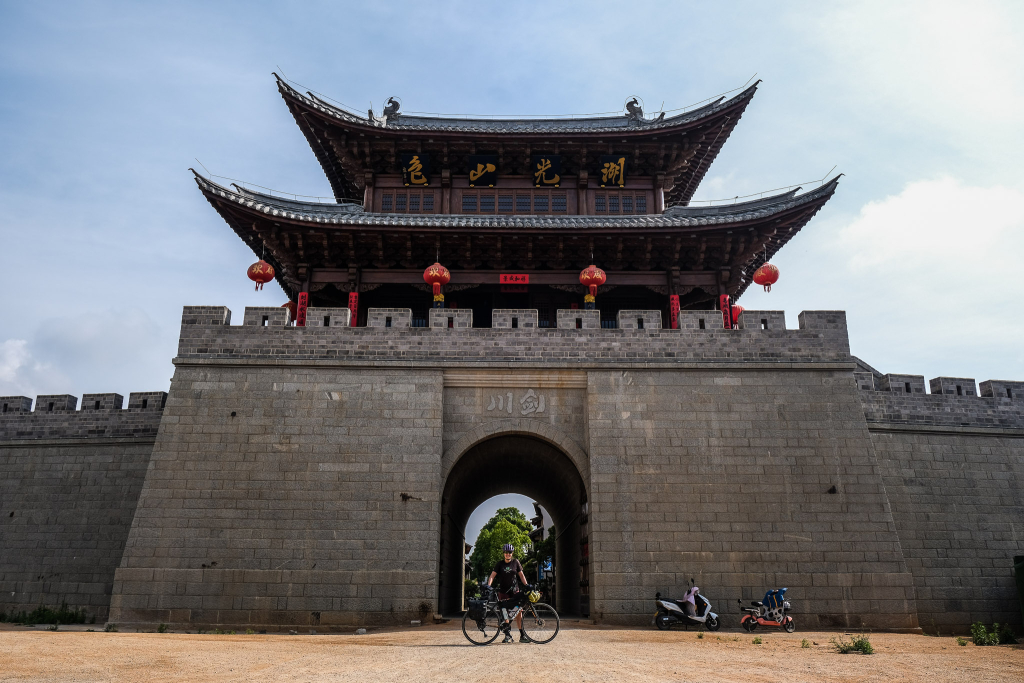
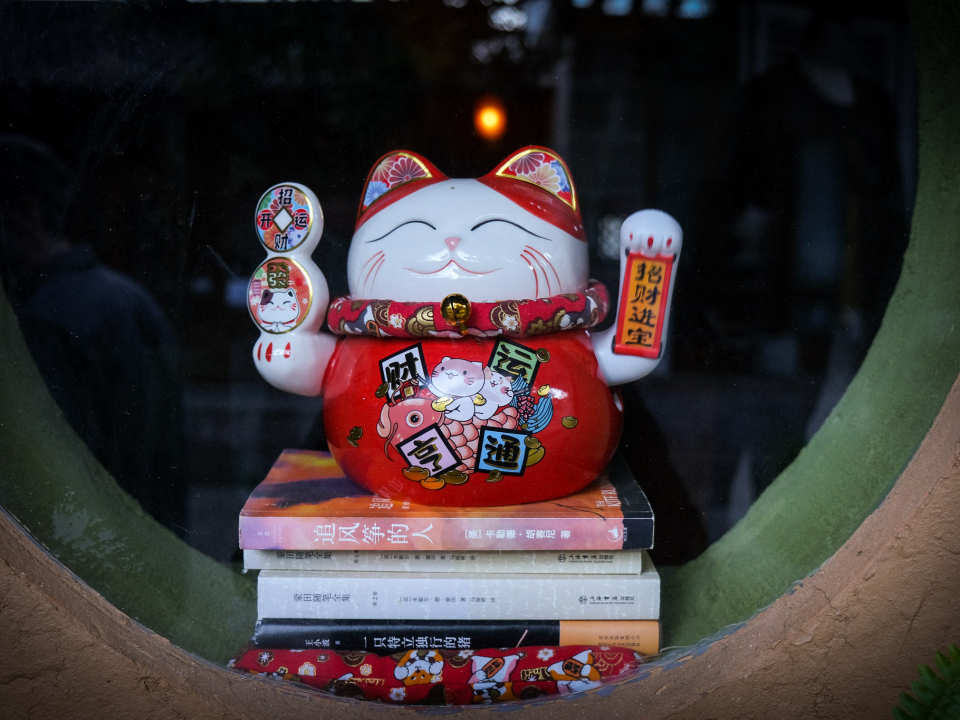
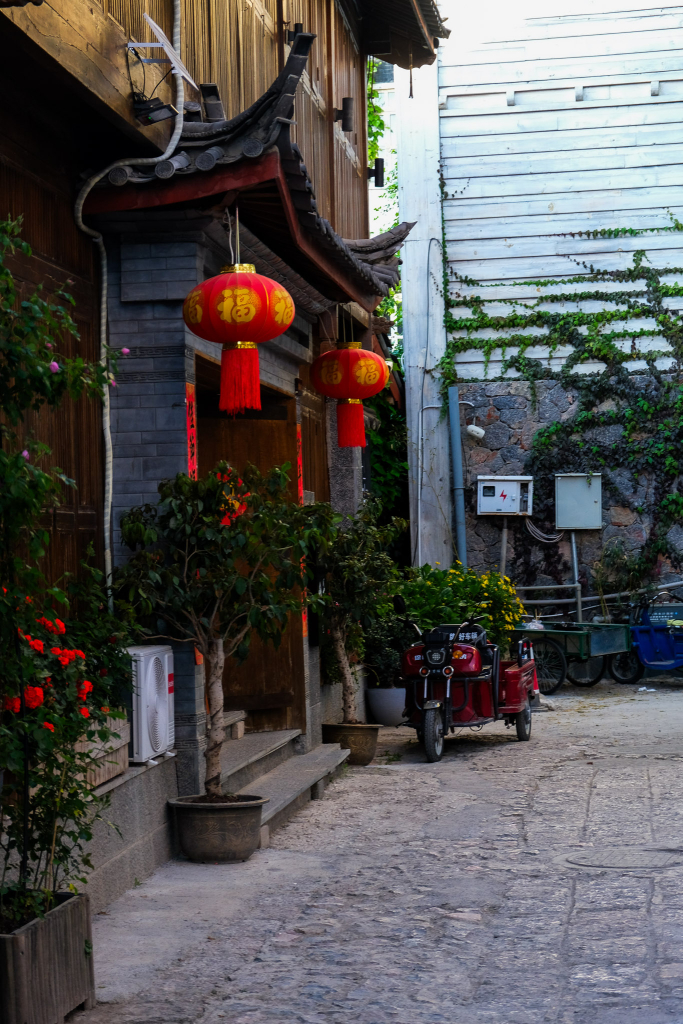
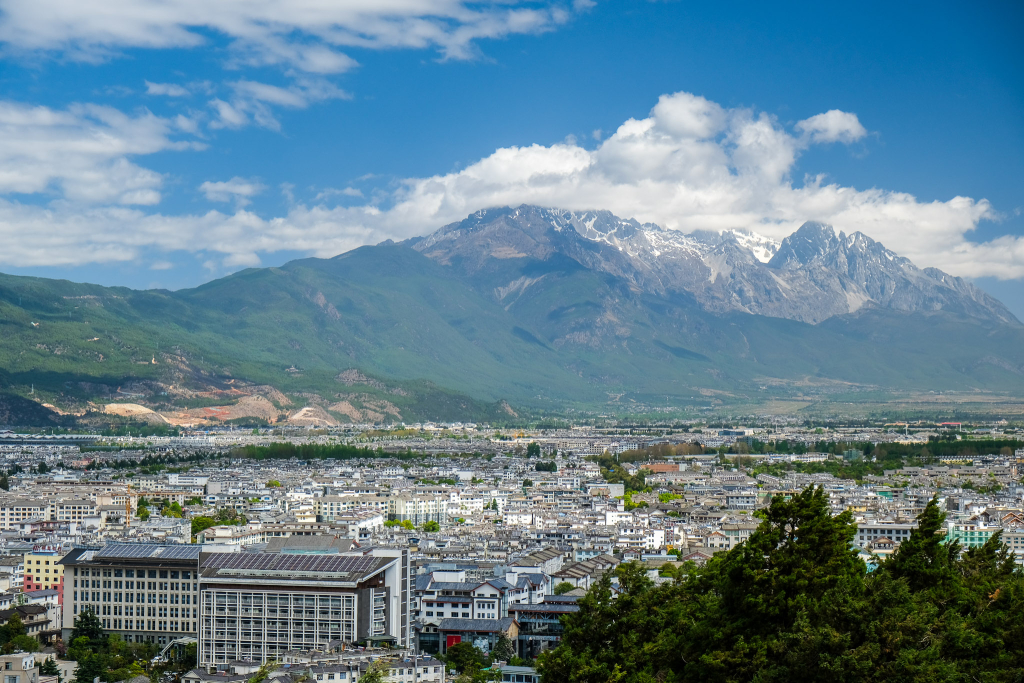
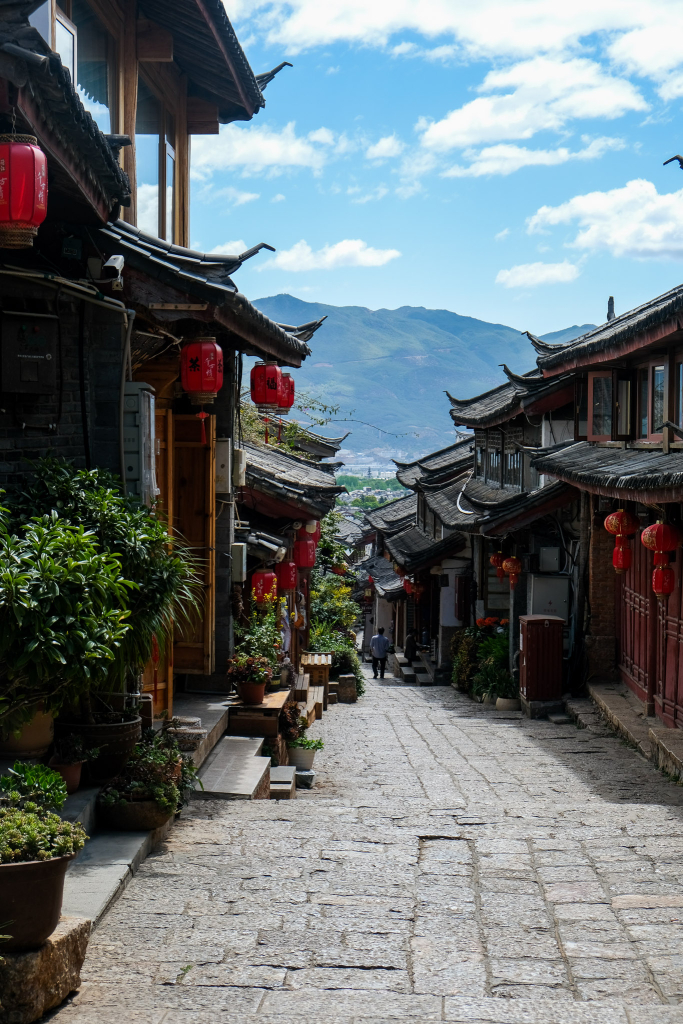
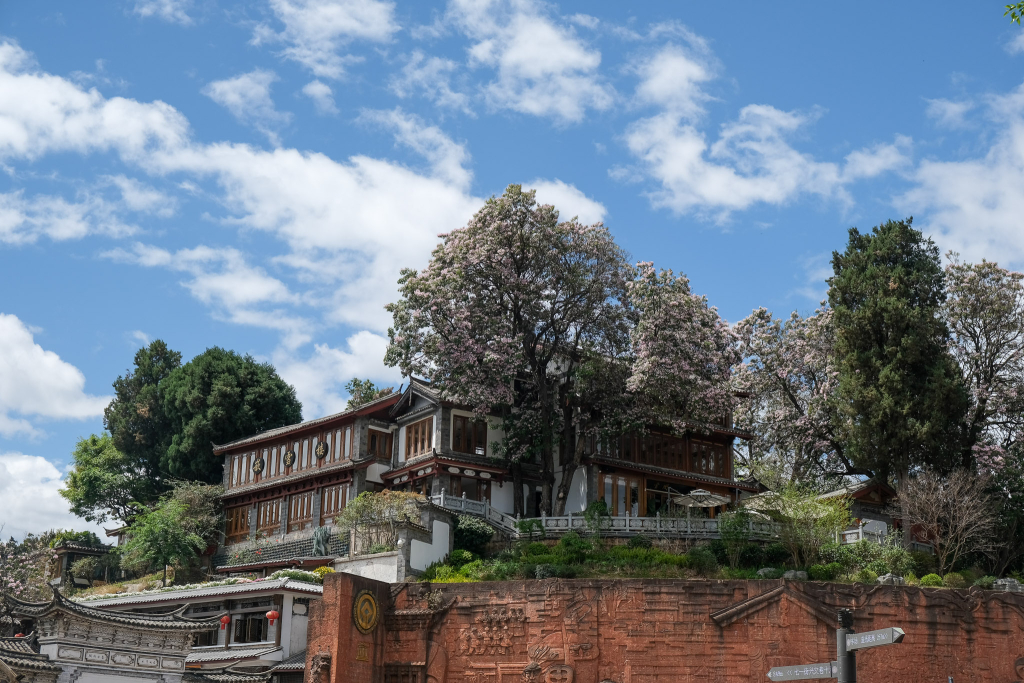
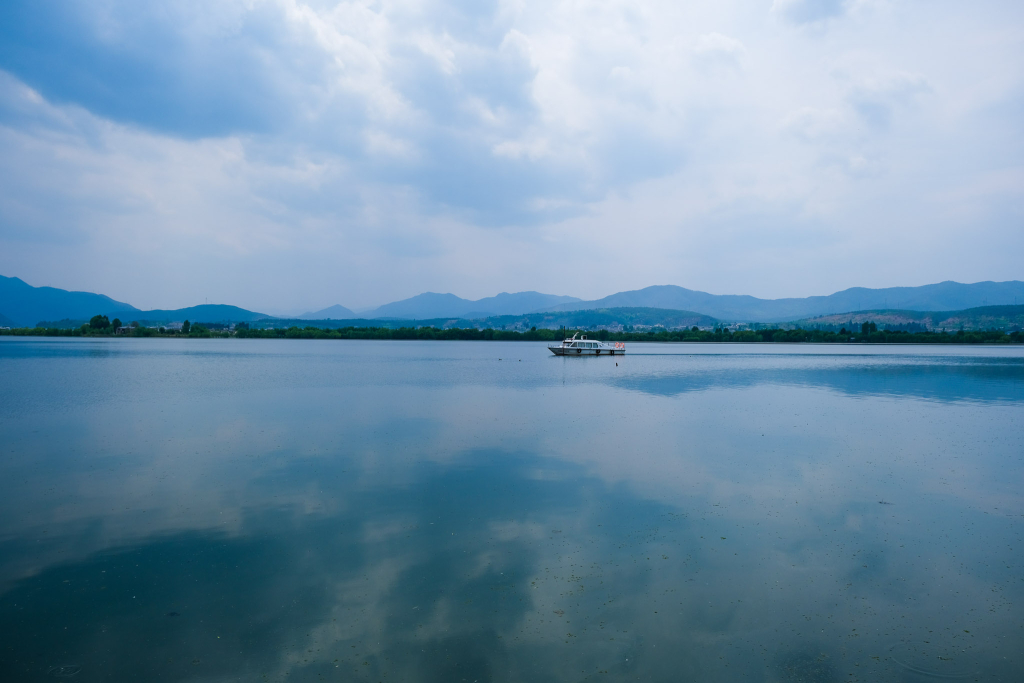
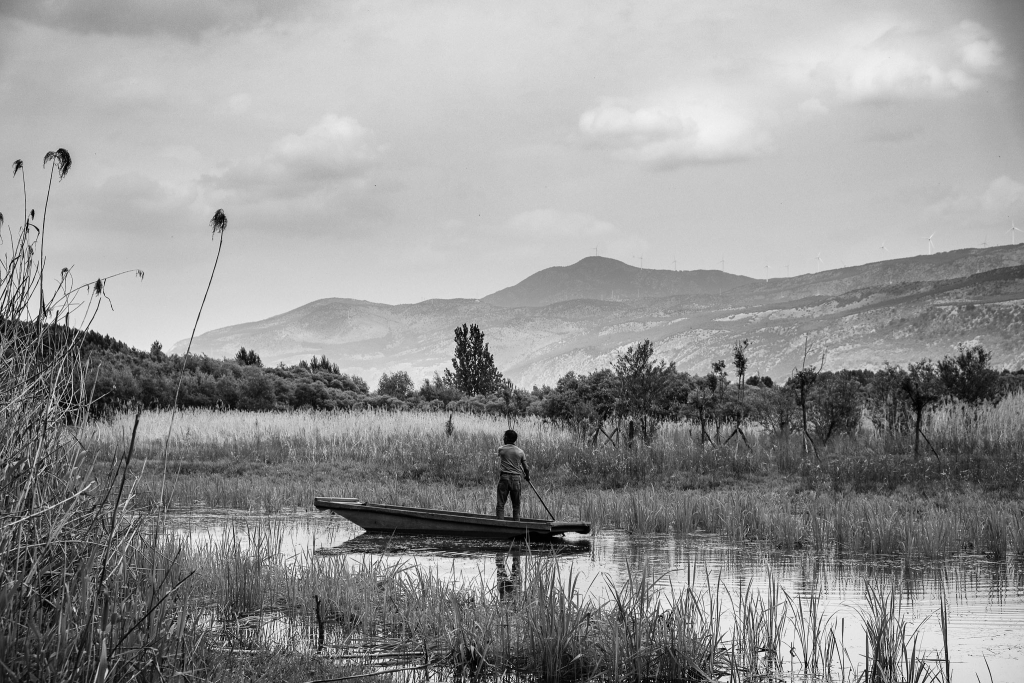
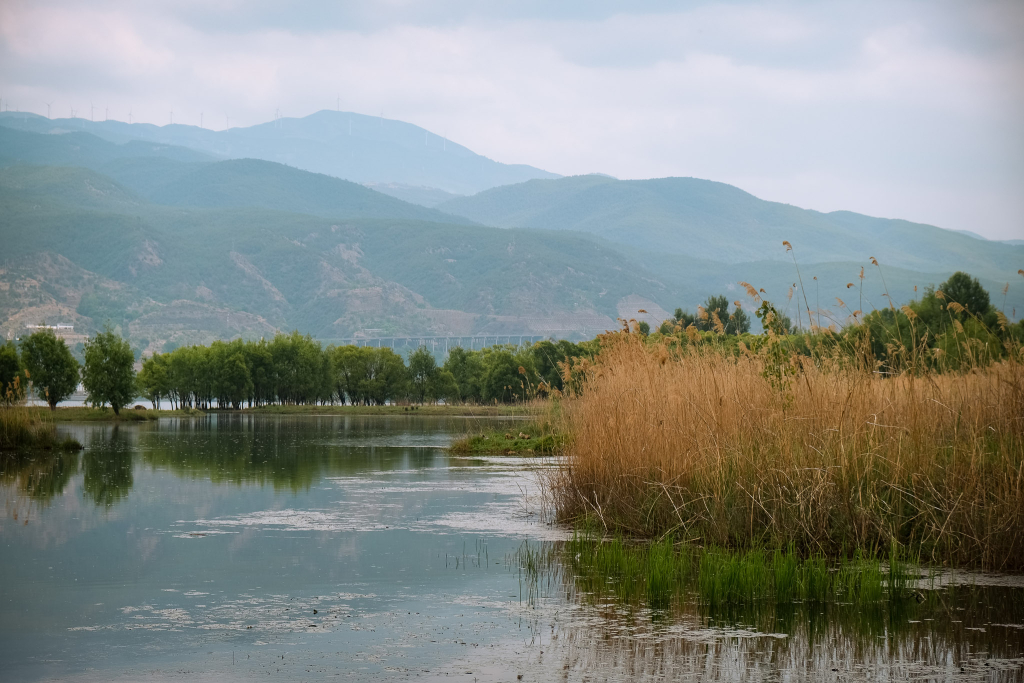
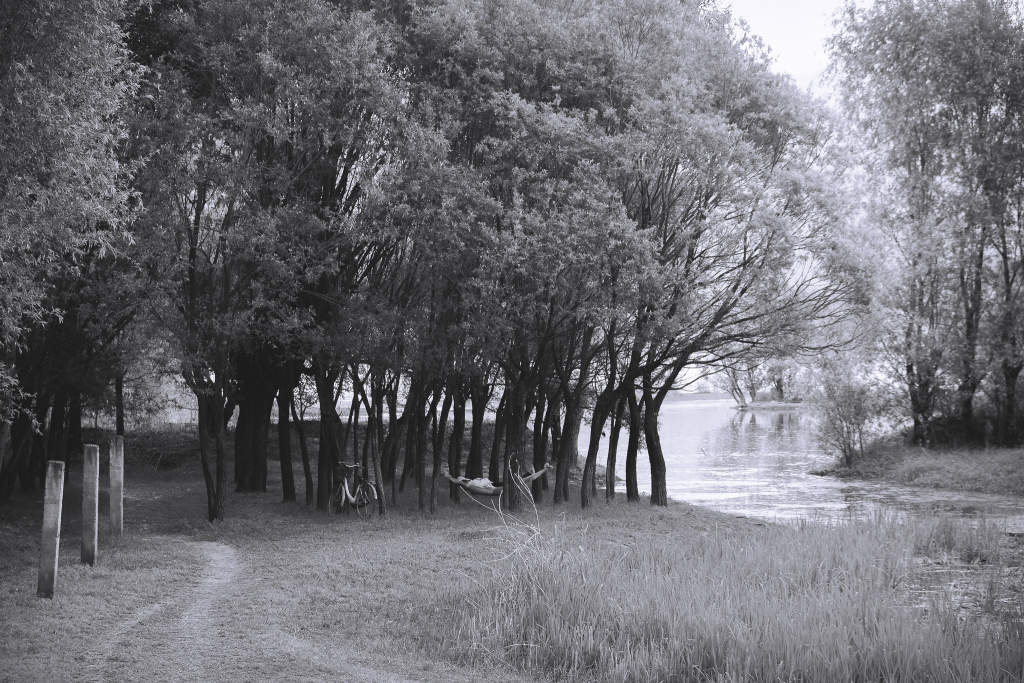
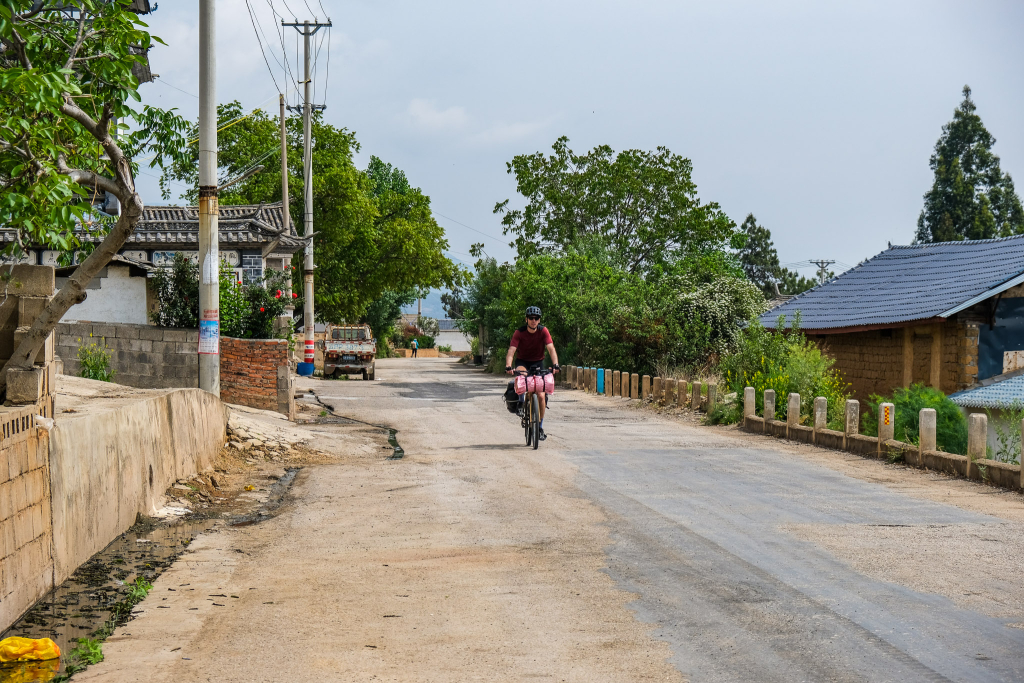
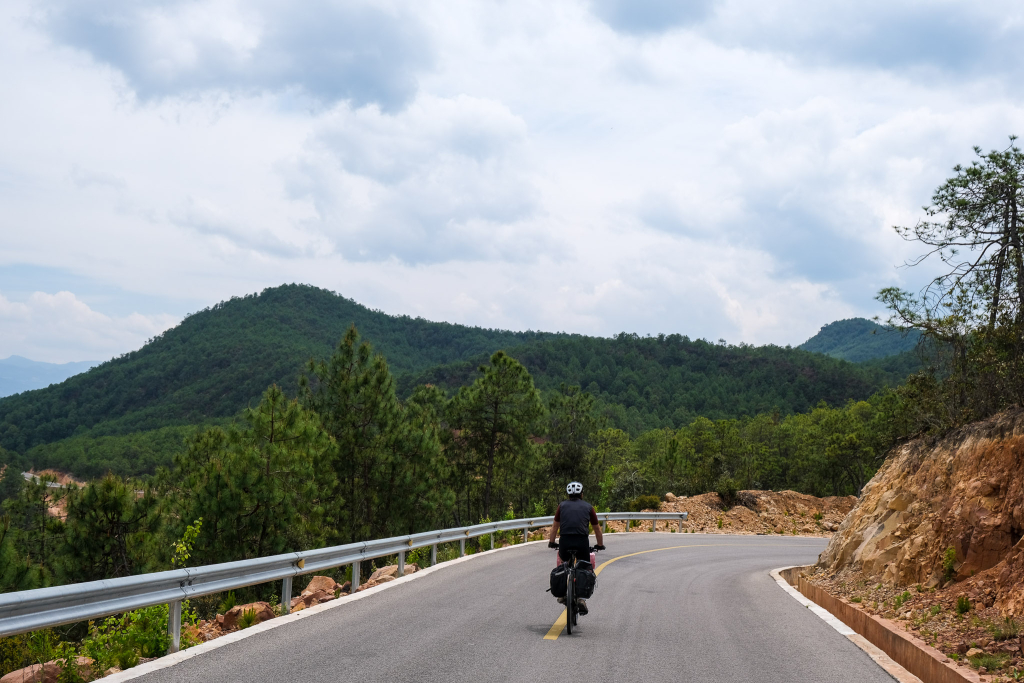
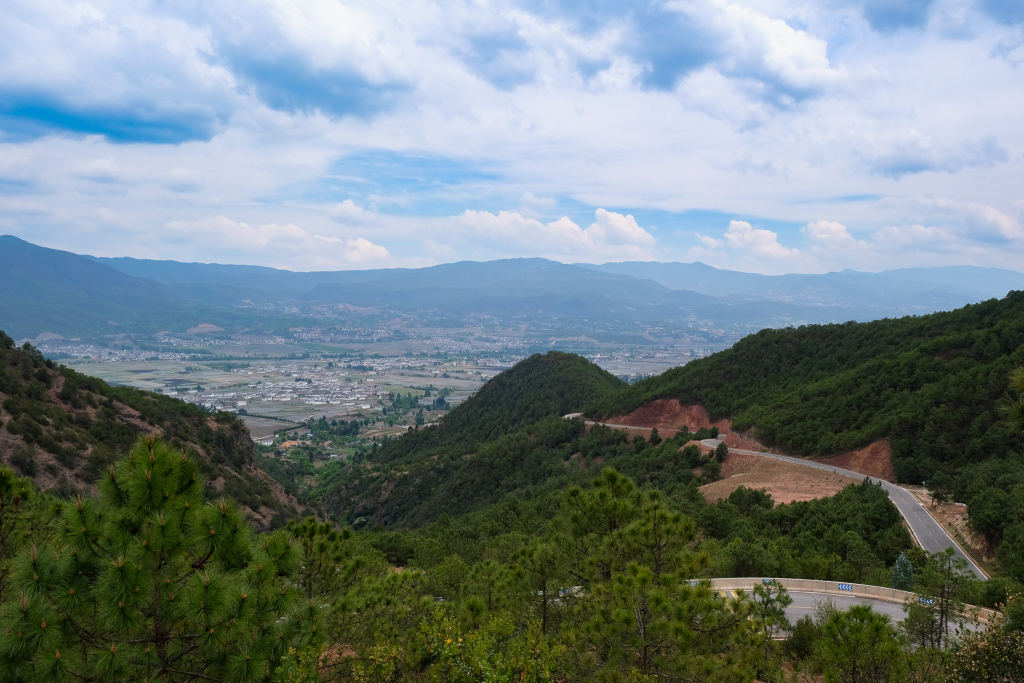
You must be logged in to post a comment.